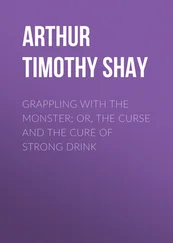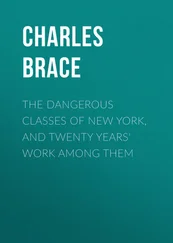Mattias Berg - The Carrier
Здесь есть возможность читать онлайн «Mattias Berg - The Carrier» весь текст электронной книги совершенно бесплатно (целиком полную версию без сокращений). В некоторых случаях можно слушать аудио, скачать через торрент в формате fb2 и присутствует краткое содержание. Город: London, Год выпуска: 2019, ISBN: 2019, Издательство: MacLehose Press, Жанр: Триллер, на английском языке. Описание произведения, (предисловие) а так же отзывы посетителей доступны на портале библиотеки ЛибКат.
- Название:The Carrier
- Автор:
- Издательство:MacLehose Press
- Жанр:
- Год:2019
- Город:London
- ISBN:978-0-85705-788-4
- Рейтинг книги:4 / 5. Голосов: 1
-
Избранное:Добавить в избранное
- Отзывы:
-
Ваша оценка:
- 80
- 1
- 2
- 3
- 4
- 5
The Carrier: краткое содержание, описание и аннотация
Предлагаем к чтению аннотацию, описание, краткое содержание или предисловие (зависит от того, что написал сам автор книги «The Carrier»). Если вы не нашли необходимую информацию о книге — напишите в комментариях, мы постараемся отыскать её.
The Carrier — читать онлайн бесплатно полную книгу (весь текст) целиком
Ниже представлен текст книги, разбитый по страницам. Система сохранения места последней прочитанной страницы, позволяет с удобством читать онлайн бесплатно книгу «The Carrier», без необходимости каждый раз заново искать на чём Вы остановились. Поставьте закладку, и сможете в любой момент перейти на страницу, на которой закончили чтение.
Интервал:
Закладка:
I blinked, my eyes tearing up from the bright light of Ingrid’s portable command terminal, and I searched my memory. The image was well-known and at the same time totally strange, as if from another era. Before the escape .
I had seen it so many times in those days, as part of Edelweiss’ repellent scenarios, the simulated nuclear weapons attacks designed to eradicate mankind; had them welded into my consciousness for more than a decade now. The warheads neatly distributed all over the globe—every one of them more powerful than the one that fell on Hiroshima. No longer just fission, splitting the atom, but now fusion too: atomic nuclei molten together in what were called “hydrogen bombs” or “thermonuclear weapons”.
And behind these neutral-sounding scientific expressions was the same process as in the sun’s incessant internal explosions. With immeasurably high temperatures and very real Doomsday potential.
Not even we in NUCLEUS had been allowed to know the exact number of our own nuclear weapons. The official figure was 7,700 of those separate, apocalyptic suns. It was reckoned the Russians had 9,500, but in our training we counted on them having significantly more. Roughly two thousand of the world’s warheads were thought to be at the highest state of alert, ready to be connected and co-ordinated in one way or another, with or against each other.
For us the real number made no difference. It was in any case far more than we needed to simulate absolutely anything.
When Ingrid pressed the keys on the terminal, red lines appeared one by one between the yellow triangles covering the world map. They showed the over-arching structure: how connections ran from or to our nuclear weapons bases, which nodes should be protected and where, and how. I tried to recall the details. It felt like a lesson from an earlier life. My head was bursting with alcohol, pain and exhaustion. Soon the whole surface of the world was covered in red lines and yellow triangles—in some places so thickly that the countries under them could hardly be seen.
Then Ingrid zoomed in on the U.S. All places I knew in my sleep, every foot both above and beneath the surface. The tunnels we had run, crept and wormed our way through. Trained all day long to prepare for what was called “Unauthorized nuclear weapons launch”. First to protect, and then to counter-attack, with our own Doomsday tools.
There were now no longer any names on the screen, but they were not necessary: just a number of angry yellow warning triangles. During our first week in West Point’s sealed wing we had to learn by heart everything about our seven nuclear weapons bases. Rattle off their geographical locations, mark them on a skeleton map, learn everything about manning and threats and alarm systems, so we would be able to recite it all, as Edelweiss put it, even when unconscious.
So the letters popped up automatically in my mind. It tended to arrange everything in sequences of three, just like the nuclear weapons codes or the sets of genes in living organisms. From east to west the initials of the active bases’ names and states produced SJN CWM BLM NDW WMM KW—standing for the air force bases Seymour Johnson in North Carolina, Whiteman in Missouri and Barksdale in Louisiana, the missile bases Minot in North Dakota, Warren in Wyoming and Malmstrom in Montana and the Kitsap submarine base up in the north-west corner of Washington State. From north to south the sequence was MND KWM MWW WMS JNC BL.
Then Ingrid zoomed out from the map, followed the red lines from one continent to the next. When she zoomed in again, on Europe, the names of our active nuclear weapons bases there came to my mind as readily.
Running from the south, the initials of the bases and countries hosting nuclear weapons for us read ITG TIA IRG BGK BBV HLU K. In other words Incirlik in Turkey, Ghedi Torre in Italy, Aviano in Italy, Ramstein in Germany, Büchel in Germany, Kleine Brogel in Belgium, Volkel in Holland and Lakenheath in the United Kingdom. From the west, LUK KBB VHB GRG GTI AII T.
When Ingrid had zoomed in far enough, I could see that some of the lines on her map were dotted. Two of them ran from Kleine Brogel in Belgium to each of Volkel in Holland and Büchel in Germany.
The rest of these lines went to two places which I did not know of as nuclear weapons bases—altogether different locations, marked on the map with black crosses. One in the southernmost part of Europe, on the tip of Italy, in this resolution perhaps Calabria, possibly Sicily. The other in the far north of Norway, possibly in Sweden: in any event, a long way inside the Arctic Circle. From each cross, a thin dotted blue line connected to the yellow triangles all over the world, all of our nuclear weapons bases.
I had never seen that link—and had absolutely no idea what it could represent. To judge from Sixten’s reaction, he too was in the dark. At last she started to explain:
“So, I’ve been tampering with our own global system. Pushing the nodes around. Reprogramming the system of connections. Day and night, over many years, whole decades. Baudelaire would probably have called them correspondences , all these secret underground linkages. I prefer to call it all the Nuclear Family. In any case, it’s now impossible for those back home, on the other side of the Atlantic, to tinker with the structure. There’s quite simply no longer any living being who can work out what will happen when one goes into the nuclear weapons system at any particular point: for example, tries to disconnect your briefcase, Erasmus. Not those who are pursuing us, not the President, not you, scarcely even me. But the risks of trying it are far greater than the upside. That’s the only thing I can guarantee.”
In the silence, I could hear Aina bustling about in the kitchen, the gentle clatter of dishes, the dishwasher being started up. Doors in modern houses are rarely well sound-proofed—although these ones might have been reinforced. Ingrid lowered her voice further.
“But I didn’t manage to finish all the preparations before we were forced to leave. So you see that some of the lines are still dashed or dotted. What we now need is some peace and quiet, here in our safe haven, plus a few field trips sooner or later. Then with Erasmus I can conclude the work.”
I turned to her. Saw how she licked the corners of her mouth: her stitches too must have broken open.
“The idea therefore,” she said, “is first to link up each of these points and lines, our hellish charges across the globe, to complete the circle—and then to disconnect them all at one and the same time. To short-circuit the whole damned Nuclear Family in one blessed moment.”
I closed my eyes, could clearly hear Aina humming. Unless it was my imagination.
“And that will be the end of the system. Every single circuit burned out from the inside. Can you imagine how complicated it would be to reconstruct? No politician would be able to push anything like that through, given what it would cost, given the ethical complications. For nearly half a century now this has been like a secret little movement. A number of people in the know have been involved from the ground up, contributed their little bit to ensure that the system appears watertight from the outside, but with significant cracks within. Waiting for someone to have the technology one day to bring all these invisible weaknesses together: to come as a savior. Or as several saviors.”
Sixten gave a little cough. Poured the last of the brandy into his balloon glass. Took a swallow before putting his question.
“But doesn’t that sort of… linkage exist? Isn’t it possible now to fire off America’s nuclear weapons all over the world? I reckon that quite a few of us were under that impression. But we’ve been imagining it?”
Читать дальшеИнтервал:
Закладка:
Похожие книги на «The Carrier»
Представляем Вашему вниманию похожие книги на «The Carrier» списком для выбора. Мы отобрали схожую по названию и смыслу литературу в надежде предоставить читателям больше вариантов отыскать новые, интересные, ещё непрочитанные произведения.
Обсуждение, отзывы о книге «The Carrier» и просто собственные мнения читателей. Оставьте ваши комментарии, напишите, что Вы думаете о произведении, его смысле или главных героях. Укажите что конкретно понравилось, а что нет, и почему Вы так считаете.












